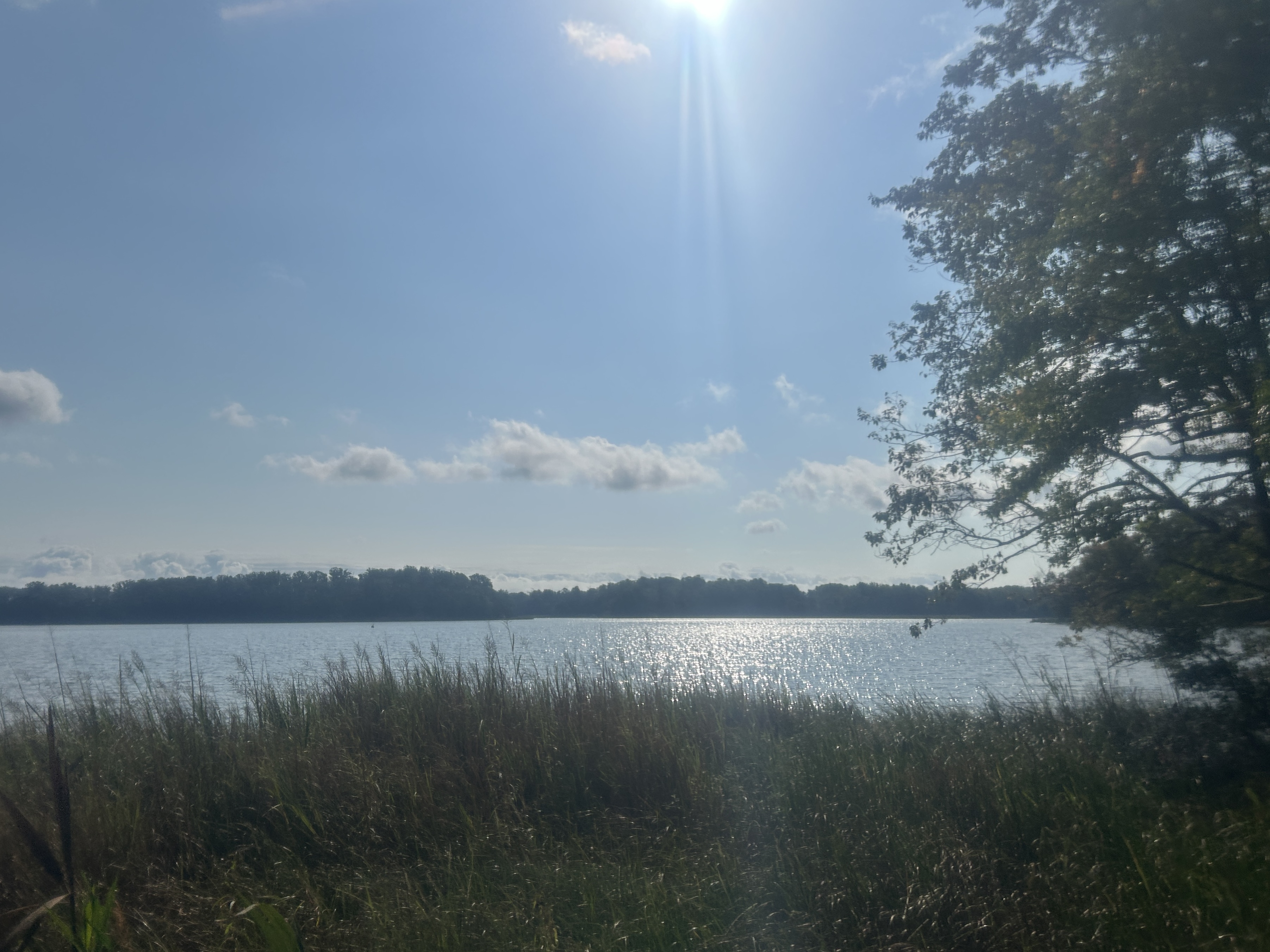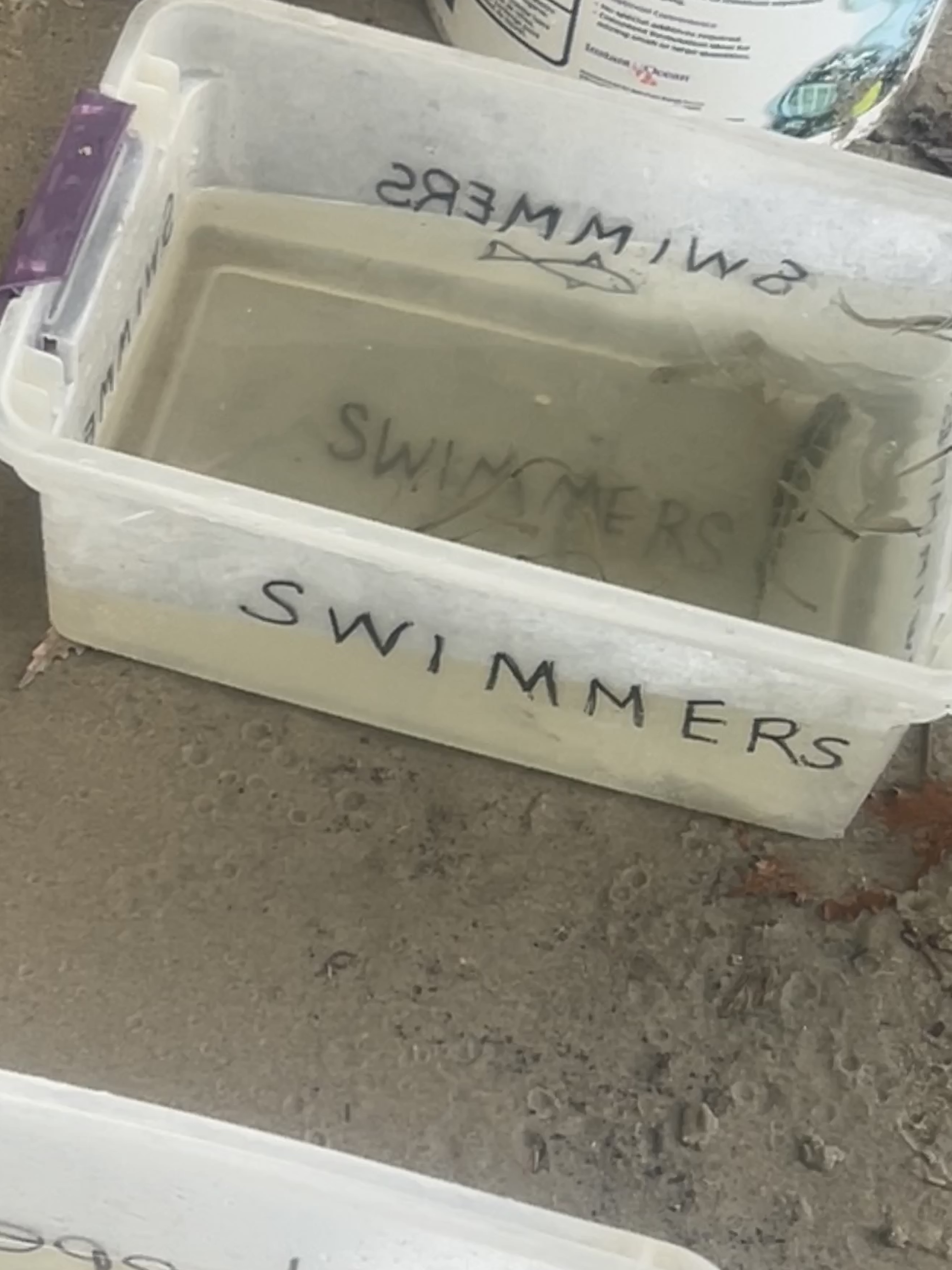Event name: Smithsonian Environmental Research Center (SERC)
Event time and place: September 21, 2024 at Edgewater, MD
During our time there, we got to learn about what SERC does as well as go on a hike, seeing all of the nature and wildlife that is protected there. SERC’s mission is to research coastal ecosystems to inform the public and the world of what can be done to aid the environment and reduce the consequences of climate change. One of their research focuses on seeing how the wetland will react as the Carbon Dioxide level rises over time. They did this by pumping Carbon Dioxide into the soil of the wetlands. As wetland capture carbon dioxide from the atmosphere. Thus, they play a crucial role in mitigating carbon dioxide in the atmosphere. However, there is a concern as we face increasing levels of carbon dioxide. They conducted this research by monitoring factors such as biodiversity, the carbon level in soil, and water filtration. The researchers looked at the difference between the wetland with pumped Carbon Dioxide and untreated wetland. This research is important towards the ongoing issue of climate change. More specifically, the greenhouse gases in the atmosphere, such as carbon dioxide, continues to increase causing major concern for the health of the planet. This research shows that wetland are a valuable natural solution towards carbon dioxide levels in the air and should be preserved.

Beautiful view during hike
Another piece of research that I found to be interesting is about Invasive Earthworms, called Mycorrhizal Ecology and Invasive Earthworms. This research tries to see how the ecology in the soil changes when there are Invasive Earthworms present versus when they are not present. The native species of earthworms are a purple color. These are different from the earthworms we see come out when it starts raining. Native Earthworms impacts the microbes in the soil. Thus, this research aims to see how nonnative and native species of worms affect forests. They first did this by establishing plots that support nonnative worms and plots that support native worms. They found that when there was an abundance of earthworms in the plot, there was a decrease in necessary fungi that promoted the growth of tree seedlings. Thus, with the decrease in fungi, the forest succession, process in which plants establish themselves and grow, could slow down. Furthermore, the presence of the invasive earthworms can result in a reduction in biodiversity and changes to how that habitat functions.
SERC has a forest habitat, as seen in Hog Island, as well as freshwater wetland habitats. In the freshwater wetland habitats, one example of human impact is overfishing. For example, in the past, oysters were fished because they were popular commercially. Because of this, the oyster population in the Chesapeake Bay has significantly decreased. This led to a number of problems in the region. For examples, oysters play a crucial role by filtering the water. When a significant number of them are removed, the water quality decreased. Overall, this hurts the habitats in the Chesapeake Bay such as reefs, which are not only important for oysters but for other species as well. The forest a variety of different species of plants and animals. Together, this biodiversity creates a thriving environment. However, often forest habitats are often destroyed for development purposes. We already have been that the decrease in trees results in many consequences such as increases in the amount of Carbon Dioxide in the atmosphere. Thus, SERC protects forests like the one at Hog Island to not only conduct research, but to also preserve an important habitat in the Chesapeake Bay.
SERC reaches out to the community by conducting research and making the results of that research publicly available. They also keep the area open towards the public for which people can explore and walk a hike in the area. While we were there, we saw many people come and go one hikes on the trail. At SERC, the main building has many resources to learn about the species living in the area. For example, there are tanks holding a variety of different sea creatures. There are also a lot of activities for people to enjoy and learn more about the Chesapeake Bay and its habitats. For example, during our time there, we got the opportunity to get in the water and catch fish using a net. We would then put them in different buckets into categories such as swimmers or jumpers. By having these kinds of activities as well as opportunities to explore, more people are able to learn about the value of the Chesapeake Bay and how our actions can affect them.

Fish we caught!


